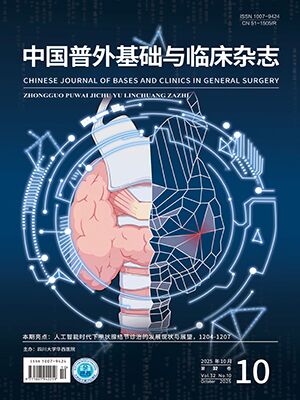Objective To investigate the relationship between syndecan-1 protein and malignant phenotypes of hepatocellular carcinoma (HCC).
Methods forty-seven formalin-fixed sections were obtained. The syndecan-1 was measured with immunohistochemistry assay (ABC method).
Results Among 47 HCC tissues, 28 (59.6%) show negative staining, the syndecan-1 negative rate in HCC with poor differentiation was higher than those with good differentiation (78.3% vs 41.7%, P<0.05), and negative rate in large HCC was higher than in small HCC (81.0% vs 42.3%, P<0.01), and negative rate in HCC with the presence of tumor-cells in blood was greater than in those without tumor-cells in blood (84.2% vs 42.9%, P<0.01). No correlation was found between syndecan-1 expression and serum AFP level and Child class. Conclusion Syndecan-1 expression is correlated with the growth, differentiation, invasiveness, metastasis and progression of HCC. It is possible that syndecan-1 is a negative regulator of these malignant phenotypes of HCC, can be regarded as suppressive gene.
Citation: WANG Xuehao,CHENG Feng,QIAN Jianmin,et al.. CORRELATION BETWEEN SYNDECAN-1 PROTEIN EXPRESSION AND MALIGNANT PHENOTYPES OF HEPATOCELLULAR CARCINOMA. CHINESE JOURNAL OF BASES AND CLINICS IN GENERAL SURGERY, 2001, 8(4): 239-241. doi: Copy
Copyright © the editorial department of CHINESE JOURNAL OF BASES AND CLINICS IN GENERAL SURGERY of West China Medical Publisher. All rights reserved




